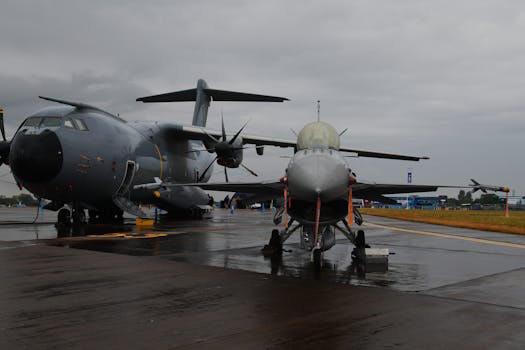
**
NATO Summit 2024: A Transformational Moment Despite Defence Spending Divisions?
The recent NATO summit concluded with mixed results, leaving analysts debating whether it truly marked a "transformational" moment for the alliance, as proclaimed by Secretary General Jens Stoltenberg. While significant progress was made on several fronts, including bolstering Ukraine's defense capabilities and expanding partnerships, deep divisions over defense spending continue to cast a shadow on the alliance’s future cohesion and effectiveness. This article explores the key outcomes, challenges, and the long-term implications of this pivotal summit for NATO's strategic posture in an increasingly complex geopolitical landscape.
Ukraine: The Central Focus of the NATO Summit
Ukraine dominated the summit agenda. The unwavering commitment to supporting Ukraine against Russian aggression was a resounding theme. This commitment manifested in several key areas:
- Increased Military Aid: NATO members reiterated their pledge to provide sustained military assistance to Ukraine, including advanced weaponry, ammunition, and training. The specifics of this aid remain partially undisclosed for security reasons, but the overall message was clear: NATO will not abandon Ukraine.
- Long-Term Security Assurances: Discussions around long-term security guarantees for Ukraine post-conflict were a major point of contention. While no concrete commitments were made regarding NATO membership, the alliance reaffirmed its commitment to Ukraine's sovereignty and territorial integrity. This represents a subtle but important shift in the alliance's approach, signaling that a path towards future integration might be considered.
- Accountability for War Crimes: NATO members reaffirmed their commitment to holding Russia accountable for war crimes committed in Ukraine. This underscored the alliance's stance on international law and the need for justice for the victims of the conflict.
These commitments, although positive, are hampered by the ongoing logistical challenges and the unpredictable nature of the conflict. The question of how NATO sustains its support over the long term, particularly in the face of potential fatigue amongst some member states, remains a significant challenge.
Defence Spending: A Persistent Point of Contention
Despite the show of unity regarding Ukraine, significant disagreements persist among NATO members regarding defense spending. The 2% of GDP target, a long-standing commitment, continues to be a point of friction. Several member states have failed to meet this target, prompting criticism from those who argue that inadequate spending undermines the alliance's collective defense capabilities.
- The 2% GDP Target: The persistent failure of some nations to reach the 2% GDP target for defense spending highlights the economic realities faced by various NATO members. This issue underscores the need for a more nuanced approach to defense budgeting, possibly incorporating different criteria based on individual national capabilities and circumstances.
- Modernization Efforts: Beyond the 2% target, significant investment is needed in modernizing military equipment and technologies to maintain a technological edge against potential adversaries. This requires not only increased spending but also coordinated efforts to ensure interoperability among member states' armed forces.
- Future Funding Mechanisms: The summit highlighted the need for innovative and sustainable funding mechanisms to ensure the alliance's long-term financial stability. This includes exploring options beyond simply increasing national budgets, such as pooled resources or joint procurement programs.
The disparity in defense spending capabilities underlines the unequal burden-sharing within NATO, potentially affecting decision-making processes and strategic planning. Addressing this issue is crucial for maintaining the alliance's credibility and effectiveness.
Expanding Partnerships: A Strategic Focus
The summit also witnessed a focus on expanding partnerships with non-NATO countries, specifically in regions facing increasing instability. This strategic expansion aims to strengthen global security cooperation and project NATO's influence beyond its borders.
- Strengthening Transatlantic Ties: The summit reaffirmed the strong transatlantic bond and the importance of close collaboration between North America and Europe. This shared commitment underpins NATO’s ability to respond effectively to global challenges.
- Partnering with non-NATO countries: The engagement with partner nations, particularly in the Indo-Pacific region, highlights NATO's growing global reach. These partnerships offer opportunities for enhanced intelligence sharing, joint military exercises, and increased cooperation on cybersecurity and counter-terrorism.
- Cybersecurity and Emerging Technologies: The summit acknowledged the increasing importance of cybersecurity and emerging technologies in modern warfare. This underscores the need for NATO to adapt and invest in capabilities to address these new challenges.
Conclusion: A Transformational Moment?
Whether the recent NATO summit truly marked a "transformational" moment is debatable. While progress was made on supporting Ukraine and enhancing partnerships, the persistent challenges surrounding defense spending and the inherent complexities of the global security landscape complicate any definitive assessment. The summit highlighted both the alliance’s strengths – its solidarity in the face of aggression – and its weaknesses – its internal divisions and uneven capacity. The coming years will be crucial in determining whether the commitments made at the summit translate into tangible improvements in NATO's ability to address the complex challenges it faces in an increasingly volatile world. The success of the "transformation" will hinge on member states' commitment to overcoming internal divisions and effectively adapting to the evolving global security environment. Further monitoring of defense spending commitments and the implementation of strategic initiatives will be crucial to assessing the long-term impact of this pivotal summit.



















